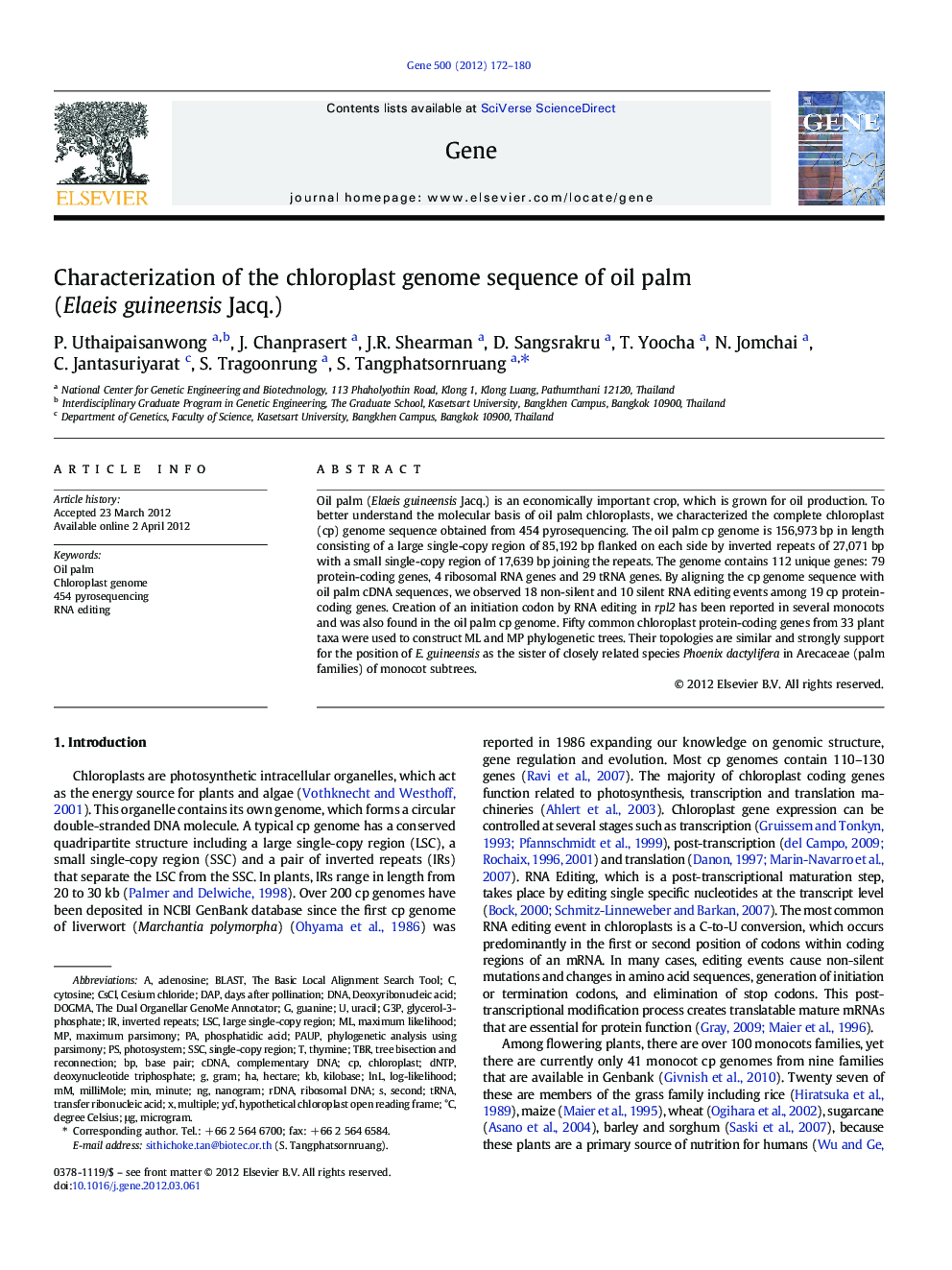| Article ID | Journal | Published Year | Pages | File Type |
|---|---|---|---|---|
| 2817721 | Gene | 2012 | 9 Pages |
Oil palm (Elaeis guineensis Jacq.) is an economically important crop, which is grown for oil production. To better understand the molecular basis of oil palm chloroplasts, we characterized the complete chloroplast (cp) genome sequence obtained from 454 pyrosequencing. The oil palm cp genome is 156,973 bp in length consisting of a large single-copy region of 85,192 bp flanked on each side by inverted repeats of 27,071 bp with a small single-copy region of 17,639 bp joining the repeats. The genome contains 112 unique genes: 79 protein-coding genes, 4 ribosomal RNA genes and 29 tRNA genes. By aligning the cp genome sequence with oil palm cDNA sequences, we observed 18 non-silent and 10 silent RNA editing events among 19 cp protein-coding genes. Creation of an initiation codon by RNA editing in rpl2 has been reported in several monocots and was also found in the oil palm cp genome. Fifty common chloroplast protein-coding genes from 33 plant taxa were used to construct ML and MP phylogenetic trees. Their topologies are similar and strongly support for the position of E. guineensis as the sister of closely related species Phoenix dactylifera in Arecaceae (palm families) of monocot subtrees.
► The oil palm chloroplast genome of was obtained from 454-pyrosequencing. ► The genome features were characterized and compared with other plant species. ► RNA seq was performed to map cp genes to identify RNA editing sites. ► Cp genes were used to construct phylogenetic relationships in angiosperms.
